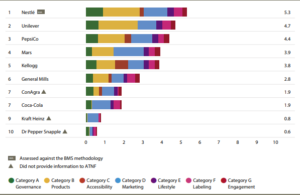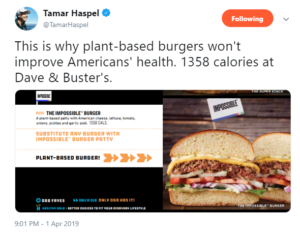Industry-funded opinion of the week: diets for diabetes
This is one of an ongoing series of examples of how industry funding skews, or to be more precise, is strongly associated with skewing, of research and opinion about matters of diet and health.
This example is an analysis of the scientific rigor of dietary approaches to controlling type 2 diabetes through diet. The authors looked at the evidence for efficacy of the DASH, Mediterranean, Plant-Based, and Low-Carb diets.
Improving the Scientific Rigor of Nutritional Recommendations for Adults with Diabetes: A Comprehensive Review of the American Diabetes Association Guidelines Recommended Eating Patterns. Hallberg S, Dockter NE, Kushner J, Athinarayanan S. Preprints 2019. Online March 5. doi: 10.20944/preprints201812.0187.v2
Conclusion: “Our review of the current Standards and Recommendations finds significant shortcomings regarding scientific review methodologies, which are likely to translate to suboptimal clinical care decisions for patients with T2D.” The study dismisses most studies of the DASH, Mediterranean, and Plant-based diets as poorly done or otherwise inappropriate for their review. For the DASH diet, it says more research is needed. It calls for more research on whether the benefits of Mediterranean diets are due to low carb or healthy fats, and suggests that the benefits of plant-based diets may be due to weight loss. The best evidence supports the Low-Carb diet: “Evidence from 30 trials and 10 follow-up studies demonstrates that a low-carbohydrate diet is an effective dietary approach for addressing dyslipidemia.”
Conflict of Interest Statement: SJH is an employee and shareholder of Virta Health, a for-profit company that provides remote diabetes care using a low-carbohydrate nutrition intervention, and serves as an advisor for Atkins Corp. NED is a paid consultant for Virta Health. JAK serves as medical director of McNair Interests, a private equity group with investments in type 1 diabetes and other chronic illnesses, and is also an advisor for Sanofi and Lexicon.
Comment: All authors are employed by or consult for a company that uses low-carb dietary approaches in its for-profit business. As I explain in Unsavory Truth, the influence of industry funding is often unconscious, unintentional, and unrecognized. Nevertheless, the opinions of the authors can be predicted from their financial connections to Virta Health.





